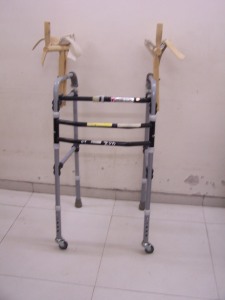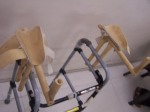All students and the therapists who are treating patients with stroke must have thought or heard this kind of question in their practice.
What is the therapeutic management of frontal lobe bleed/infarction?
What is the therapeutic management of occipital bleed /infarction?
What is the therapeutic management of parietal bleed /infarction?
What is the therapeutic management of thalamic bleed?
Instead of answering these questions, we need to ask different questions
What are the sign & symptoms of these patients? What are the physical & perceptual impairments of patients?
What are the activity the patient is able to do and not able to do?
What impairments are limiting the activity? What are the contextual factors & personal and environmental factors are restricting his participation?
Neurologist does the medical or neurological diagnosis of patient’s i. e. Stroke due to infarction or bleed. Bleed or infraction internal capsule, thalamus, basal ganglion, MCA territory etc. This different level of injury and severity will helps us in finding out the prognosis and planning of treatment according to level of lesion and severity of it.
But for us as a physiotherapist we need to look at the movement dysfunction. We need to find the physiotherapeutic diagnosis of movement dysfunction. Such as hemiplegia, henianesthesia, cognitive and perceptual disorders, unilateral neglect, heminomus hemianopia, shoulder dislocation, genu recurvatum, hemiplegic hand, claw hand, fixed flexion deformity,
“
Stoke is Medical diagnosis,
Hemilplegia is a Physical diagnosis ….!”
We treat hemiplegia neurologist treats stroke.
We need to keep in mind that we as therapists don’t treat the cause of the stroke like the medical management. We don’t plan treatment directly with the causative factors of the stroke.
We treat physical & functional dysfunction –
“MOVEMENT DYSFUNCTION”.
We plan our management according to:-
- What are activities limitations?
- What impairments (signs and symptoms) of patients causing activity limitation
- What is the need of the patients according to their lifestyle, age and occupational demands (personal & environmental factors, contextual factors)?
Any patient of stroke with any medical diagnosis the physical functional demands from life are same. These demands doesn’t change with diagnosis ( the prognosis & the ability to achieve these target might be affected due to level of lesion and severity of lesion).
Every patient basic physical functional demands from life are: -
- Bed mobility- rolling supine to sit, bed side sitting etc
- Toilet training
- Transfers from bed to chair or toilet transfers
- Sit to stand
- Standing with or without assistive devices
- Walking with or without assistive devices
- Upper limb function for hands skills & manipulations
- Activities of daily living (ADL) & Instrumental Activities of daily living (IADL)- dressing, feeding, brushing, combing, reading writing & bathing etc
- Indoor and outdoor ambulation with or without assistive devices
- Stair climbing
These activities will be required to train in patients. We need to ask questions how to achieve these activities with current level of impairments and contextual, personal & environmental factors. Plan the gaol according to the activity & participation restrictions. Train the patient for his desired activity. Involve him in planning the treatment program. Ask him which activity he wants to learn first. Take his view point in account and set realistic, challenging but achievable goals. And plan the management according to it & try to accomplice that activity. Treat those impairments which are limiting the activity and his participation in community. He may have multiple impairments but not all the impairment limits the desired activity of the patients and his physical and functional demands in his lifestyle.
To get the right answer for the management you need to ask the right question….!
If you ask a right question you will get the right answer for it.
Your main objective should be changing the participation and activity limitation in community (based on ICF model).
“Our treatment should bring some change in his life and not in the impairment…!”


 Quadriplegic patients who have LMN lesion at C7, C8 & T1 do not have hand control and are unable to hold the walker. In spite of improvement in lower limb and trunk strength these patients are unable to walk with walker because they can’t hold the walker.
Quadriplegic patients who have LMN lesion at C7, C8 & T1 do not have hand control and are unable to hold the walker. In spite of improvement in lower limb and trunk strength these patients are unable to walk with walker because they can’t hold the walker.